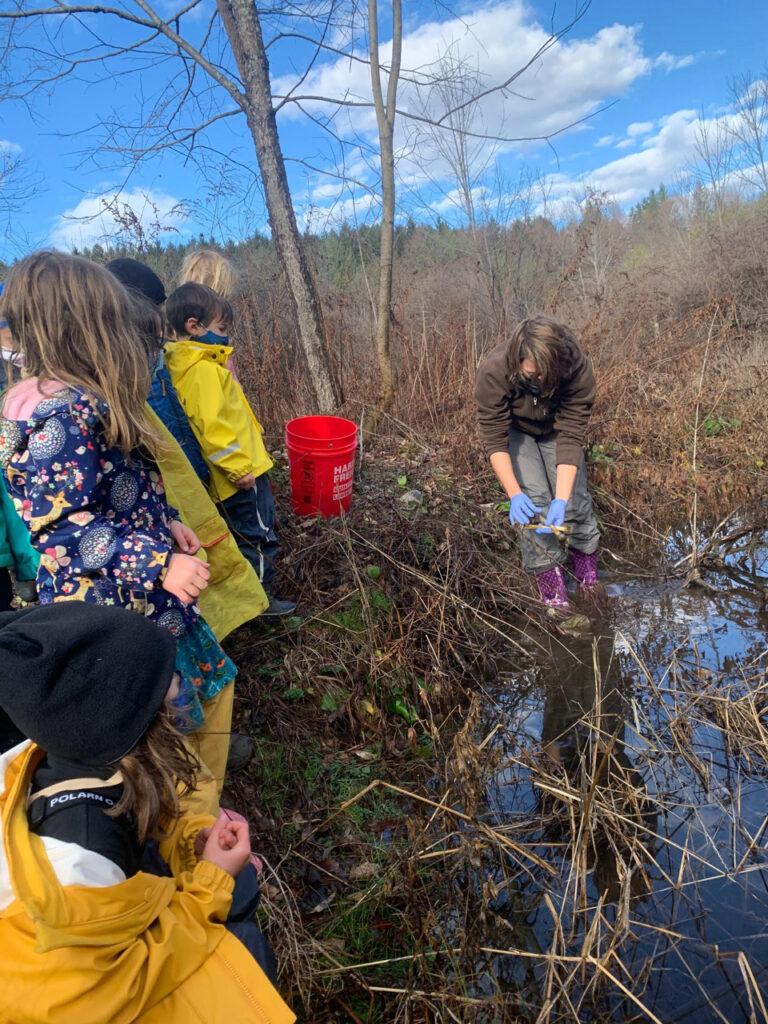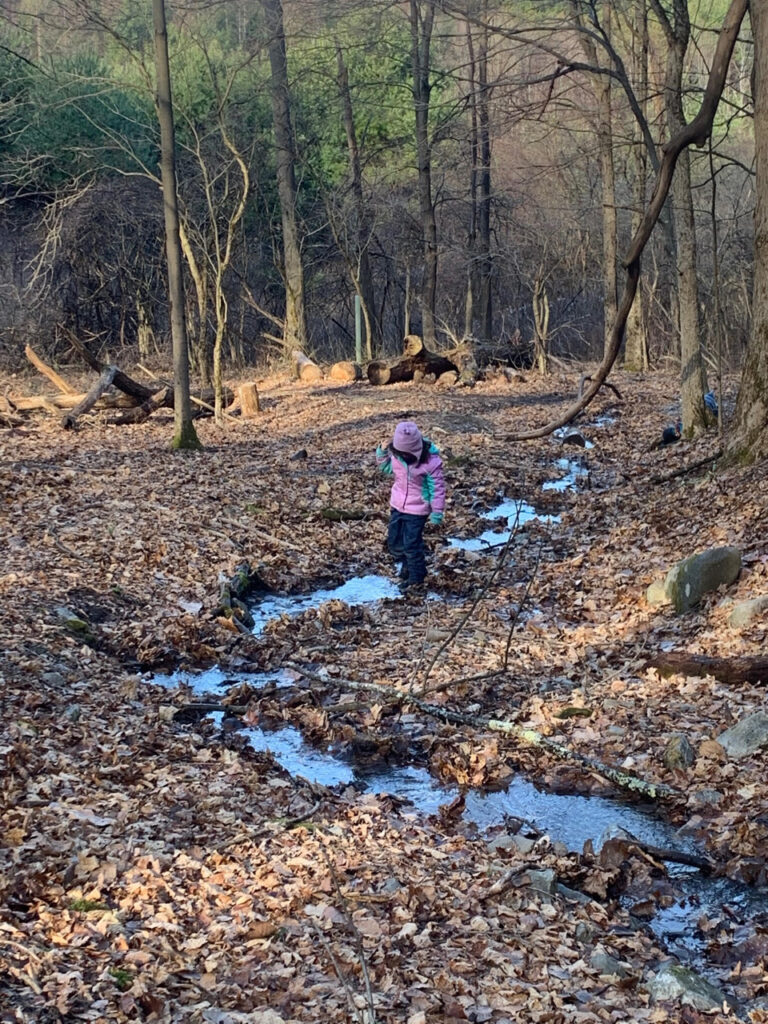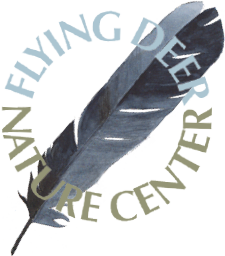We had a week of celebrating December birthdays, a unit on bone and skull studies, hikes, and camp caretaking punctured by plenty of play in late fall sunshine! One of the beauties of this program is our ability to patiently observe natural processes together. Whether that is the change in leaves, temperature, or campsite, the young ones are so keenly aware of changes in the land around us. On a weekly basis, a Woolly Bear notices a change in the landscape that has completely missed my busy adult radar. Kids are instinctively drawn to this type of mindfulness—a quality that as adults we so often try to reclaim. This semester we have all been tuned in to an interesting and a bit surprising landmark: a decomposing fawn.
On one of our first weeks, as we followed the path we always take to our campsite, we noticed a curled-up fawn by the stream. At first we thought it was serenely sleeping and then quickly realized it had been killed, likely by a coyote that ran away at the sound of arriving students and unable to enjoy their meal. This sight brought on sadness, curiosity, and a whole lot of detective work by students. In a typical school, a carcass might be whisked away, sanitizing the scene and hiding away death and decomposition. Instead, we watched each week as the body decomposed, revealing the bones beneath until we were eventually able to recognize the skull and ribs. It offered an opportunity to talk about the many decomposers—bugs, birds and bacteria—that were busy at work. Students were eager each morning to take a look from the bridge out at the body and notice changes from the previous week. (**A note that we never touched the fawn and always kept the students at a safe distance).
This week at our discovery table and morning circles, we explored bones and skulls and the differences between herbivores, carnivores, and omnivores. Students had a fun time distinguishing between teeth and used guide books to identify beaver, snake, and deer skulls. Woolly Bears even dissected owl pellets and identified what the owl had eaten based on the skulls and bones they found! Since this week we were studying bones, it only made sense for Julie to trudge into the waters and retrieve the fawn bones! The students cheered her on as she donned gloves and collected the bones from the stream. We then worked together to dig a hole and bury the bones and a few students even made a map to help us remember where they are buried. In the spring, we will dig up the bones to recreate a skeleton, which will serve as a source of learning for future students. We feel grateful for this animal for providing so much learning, attention, and curiosity this semester.


This week highlights included sit spots, collecting wood chips to spruce up our campsite trails and fire circle, organizing a few forest birthday parties complete with decorations and invitations, a few theatre productions, and lots of friendship!
—JJ and Julie
December 4, 2020
